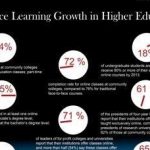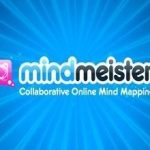Here is an insight what Scott McLeod shared with us about connected learning – the 21st century learning, through his article. It covers four aspects of connected learning.
• Engaged
• Everyone
• Play
• Creative
Scott’s quick notes from the videos are included underneath each one. My own quick summary lies at the end of the article.
Engaged
Connected Learning: ‘ENGAGED’ from DML Research Hub on Vimeo.
- We are fundamentally starting with the wrong questions
- We start with learning outcomes – and content defines everything – rather than “what is the experience we want kids to have?”
- Our core question is around engagement; if you ask “is a kid engaged?”, you have to pay attention to and start with the kid
- We have to make room for curiosity, we don’t have enough opportunities for kids to take things apart and wonder about them
- Little opportunities to fail and iterate are also opportunities to play with identity
- We need opportunities to explore who we are in the world and how the world works, particularly as teenagers
- We so decontextualize learning for kids, we’ve forgotten we have a passion for learning
- In school they could care less, but in complex games kids demand that they learn how to do something so they can move on
- As adults, we have to deeply connect content and students’ activity, otherwise learning has no meaning
Everyone
Connected Learning: ‘EVERYONE’ from DML Research Hub on Vimeo.
- We give responsibility for learning to professionals instead of remembering it’s the fabric that frames all of our interactions with everybody
- Connected learning networks force us to fundamentally rethink what we think is the problem and goal of education
- It’s about expertise that’s widely distributed; anybody can help somebody else get better at something
- If you have an educational system that always tell students what to do, you’re not building their capacity to make effective learning choices themselves
- We used to have capacity bottlenecks for learning, so you had to go to school or a library – now we don’t have that problem but we still act as if we do
- Education isn’t bound to particular institutions anymore, it can happen anywhere
- How does a kid find a mentor or peer that helps them develop their interest, make their interest relevant, find a sense of purpose, etc.
- How do we use the capacity of the network to bring people together who want to learn together?
- Everybody can participate in a connected learning model
- The great side benefit of interest-based, connected learning is that it fosters social connection and well-being: fulfillment, belonging, and purpose
Play
Connected Learning: ‘PLAY’ from DML Research Hub on Vimeo.
- Play creates for people a reason for them to want to engage
- Body and spirit are transformed by play
- Play is a state of being, a very different state of mind, openness to ideas and other people
- Not a closed, rules-bound place – the openness of the play space is extremely important
- Play is one of the most fundamental human experiences
- Play is a practice space, we play to get better at something, it helps us build confidence
- Kids are driven to want to share with you what they’re doing, what they’re making, what they’re learning
- At school, we cordon off a time for play (recess) and then you’re not doing that anymore
- When you get older, play becomes embedded in objects (video games), you can activate play when you pick up that object
- When we’re young, play is the frame for how we experience the world
- Adult life becomes about a set of responsibilities rather than a way of engaging your soul in the world
Creative
Connected Learning: ‘CREATIVE’ from DML Research Hub on Vimeo.
- We’re just now getting to the place in America where we realize it needs to be different everywhere, not just in some places
- We have to completely overhaul how we think learning happens, where it happens, and what people are capable of
- Technology transformations show us the world is going to be different
- They are going to have to be more nimble and more proficient with technology to communicate and to learn, or they’ll be a new form of illiterate
- We no longer live in a world where you can only write and read text and you will be successful
- We have to teach these new literacies and then let kids be creative in how they express themselves with these literacies.
- Schools always have been about ‘the right answer’
- Now we care more about how kids find information, think about information, communicate information
Quick Summary:
- We have to focus on how a kid can be engaged in his learning processes.
- Curiosity should be maintained how to make student to want to learn something, so that he himself wants to learn and know things not only told in default ways, and they develop their own ways of sequencing the learning. For example: what to learn next?
- Think content as context of learning, not outcome of learning.
- Let students themselves learn ways to socialize and find them mentors teach them these ways.
- Let students find content themselves on internet and learn.
- Let students feel system doesn’t go without them.
- Adult life becomes about a set of responsibilities rather than a way of engaging your soul in the world.


